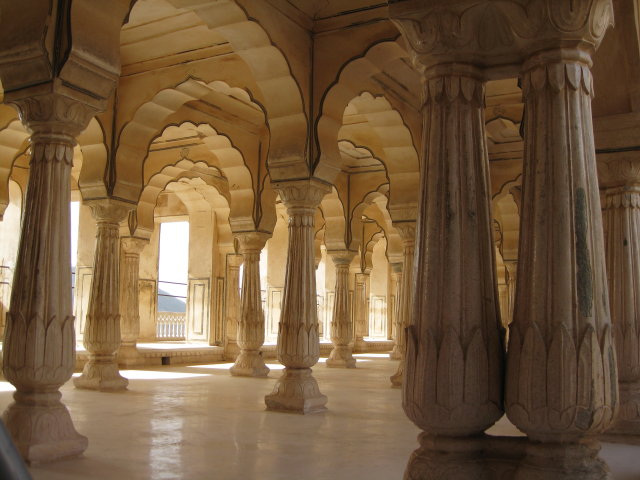We leave Jaipur for a connection through Mumbai (Bombay) and arrive in Kochin by mid afternoon. We’ve had a few incidents involving the kind of student conduct where students test the rules in the expectation that no one will challenge them or hold them accountable. The students who know me know that on the trip; the rest are wrong. However, not only is it unpleasant to document bad behavior but I do nothing but fill out paperwork for the rest of the day. A married couple—two of our best faculty members—were along with me as bus leaders on the 2nd bus and I don’t know what I would have done without their help. (One of them celebrates a birthday a few days later and the surprise dinner includes a slideshow of their many years and travels together. They offer all our students an impressive example of brilliance and dedication in both their professional and personal lives together. It is a privilege to count them as friends and colleagues.)
The next day I have another day trip to lead. (No, I’m not crazy, but I have been trying to cover my expenses with the discount credit I get from leading trips. On the other hand, if I’d known how hard the four-day trip to Delhi-Agra-Jaipur would be, I certainly would never have agreed to do another one directly following.) It turns out to be an easy trip to administer with an informative, well organized guide and 25 people who are fun to be with. They are all interested in our destination and they ask good questions.
The tour is through the backwaters of Alleppey a couple hours south of Kochin in an area of natural waterways and canals surrounded by coconut plantations and rice fields. Kerala is the state that both Kochin and Alleppey are in and it is the exception to generalizations about India. Kerala is universally literate with high levels of socio-economic equality, citizen participation, empowerment of women, and sustainability. A local business student who graduated from university in the United States has recently started-up a new enterprise in Alleppey on one of the largest lakes in India renting houseboats to vacationers from other parts of India as well as abroad. Along the well-established banks, people of both Christian and Hindu traditions go about their traditional ways with the advantage of good, basic housing and health care, and with expanded opportunities for schooling and marketing their agricultural produce and other provisions to tourists without needing to remove their families to more urban areas.
There are some aspects of the enterprise we question gently when our guide tells us that the houseboats don’t pollute and he points proudly to Alleppey’s first water-borne billboards. He expresses surprise that the European vacationers don’t want motor-powered houseboats with air conditioning but the older craft that silently moves by poles. We don’t tell him that many Americans are doing their utmost to remove billboards from scenic areas but we all think it to ourselves. I’m willing to bet that the Europeans will let them know sooner or later. On the plus side of sustainability, the houseboats employ local people for weaving palm branches on the roofs and repairing wooden craft. We even see a few solar showers and photovoltaic panels.
In the evening, back at the ship, we pull out of the Kochin harbor headed towards the small island state of Mauritius in the very old volcanic chain of the Mascarenes. We’re back at work in classes and in the library. Mauritius is not inexpensive and so I’ll be tapping advice from everyone I know who’s ever visited the island—reputed to be a genuine, emerald jewel in a deep blue sea.







